An unforgettable evening at Triund Base Camp, where the serene beauty of the Himalayas and the camaraderie of fellow trekkers made for a truly magical experience under the stars.
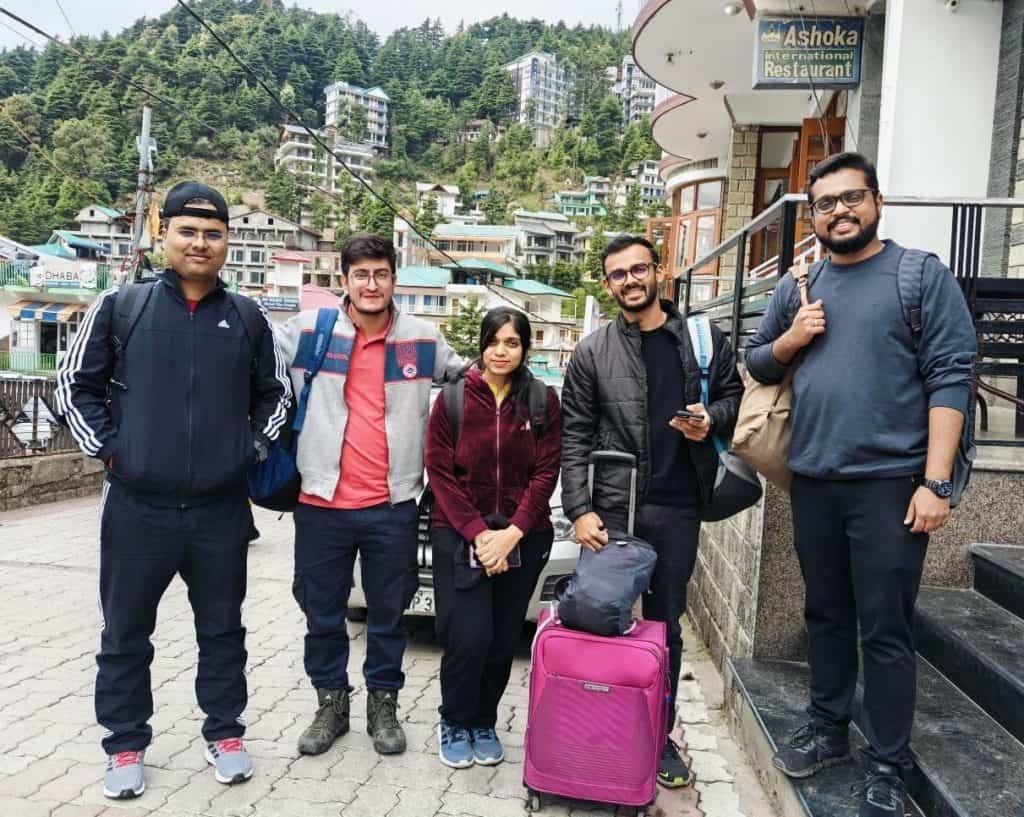
Amid my mundane routine as a Public Servant, an unexpected invitation from a colleague stirred the dormant adventurer within me, the idea to trek to Triund. For those who haven’t heard of this place, it is a mountain peak nestled in the heart of the Dhauladhar range of the Himalayas, quite popular among adventure seekers.
The idea of trekking lingered in the periphery of my thoughts until it blossomed into a spontaneous decision just two days before our departure. With little time for planning, I embraced the thrill of the unknown and hastily joined the expedition.
With backpacks slung over our shoulders and anticipation coursing through our veins, we boarded the overnight Bus to Dharamshala from Delhi. Though I have been to Himachal Pradesh many times, it was my first visit to Dharamshala.
Dharamshala has no direct railway connectivity. But it is well connected to Delhi and Chandigarh via road. Government as well as Private Bus operators provide direct services between Delhi and Dharamshala. The journey began from Majnu ka Tila in North Delhi. This locality has a good concentration of Tibetan refugees. One can get a taste of authentic Tibetan cuisine here.
As we settled into our seats, I noticed the diverse tapestry among fellow travellers. Amongst the passengers were college students, their laughter infusing the air with youthful energy. There were also Buddhist monks; their tranquil presence lent an aura of contemplation to our journey. The driver started the Bus. After plying for 2 hours, the bus stopped at a roadside dhaba for dinner. I opted for Indian thali and drank soothing lassi. Lassi is always a good option during travel as it helps in digestion and prevents acidity.
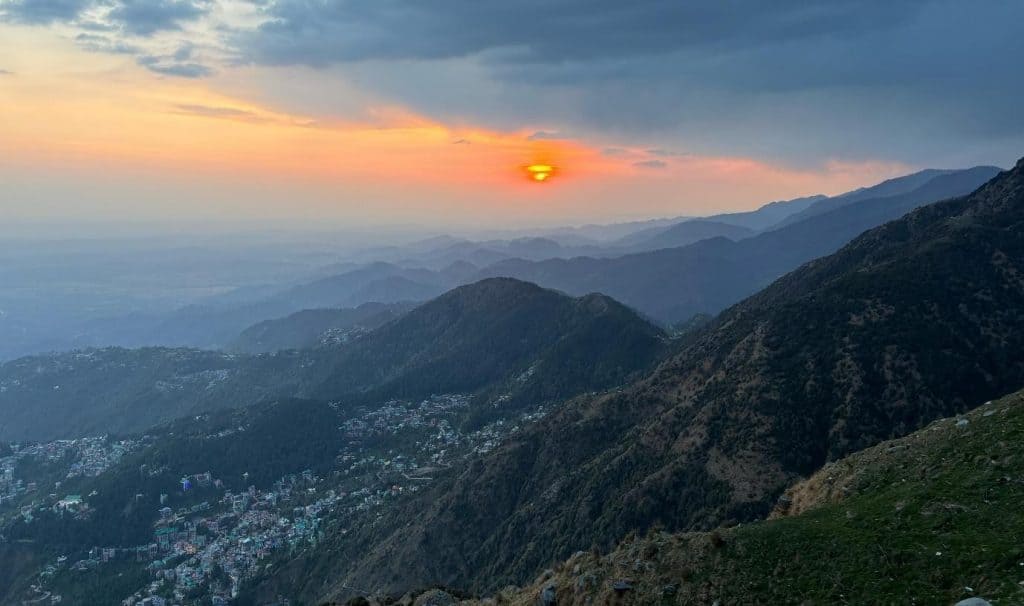
The Bus resumed its journey, and passengers were quick to fall asleep. When I opened my eyes, the Bus was navigating twists and turns on an under-constructed highway. There were sheer cliffs on one side and deep valleys on the other. I reached Dharamshala, enjoying the beauty of the Himalayas.
It was exhilarating to feel the gust of cold mountain breeze on my face as I deboarded the Bus. It had rained the previous night, and the weather was still cloudy. It was a much-needed respite from the heat of the Delhi. I took a taxi to our Hotel in McLeod Ganj. McLeod Ganj is a suburb of Dharamshala situated at a relatively higher elevation.
In addition to the opportunities McLeod Ganj provides tourists, It is also the seat of the Tibetan Government in Exile. It is the home of the Dalai Lama, the Spiritual and Political leader of the Tibetan people. That’s why many people also call it “Little Lhasa”.
The hostel was situated on a narrow, steep road. I checked into the hotel and made myself ready for the trek. Roaming in the streets, one could easily notice the mushrooming growth of Hotels and Cafes. Both Indian and continental cuisines were on the menu of most of the cafes. My gaze fell on the German Bakery near the Dharamkot taxi stand. It was neat and clean. The menu had a wide variety of options ranging from Indian to Israeli breakfast to choose from. I chose Aloo Paratha and tea. By the time the guide assembled other members of our group at the starting point, I had finished my breakfast. We started the trek from Dharamkot taxi stand.
Walking along congested lanes of Dharamkot, we passed through Bhagsu Nag temple and reached the bottom of the trail. Shops selling all sorts of items have sprung in these crowded lanes. Tourists were flocking to buy souvenirs. The guide advised us to rent a walking stick for the trek.
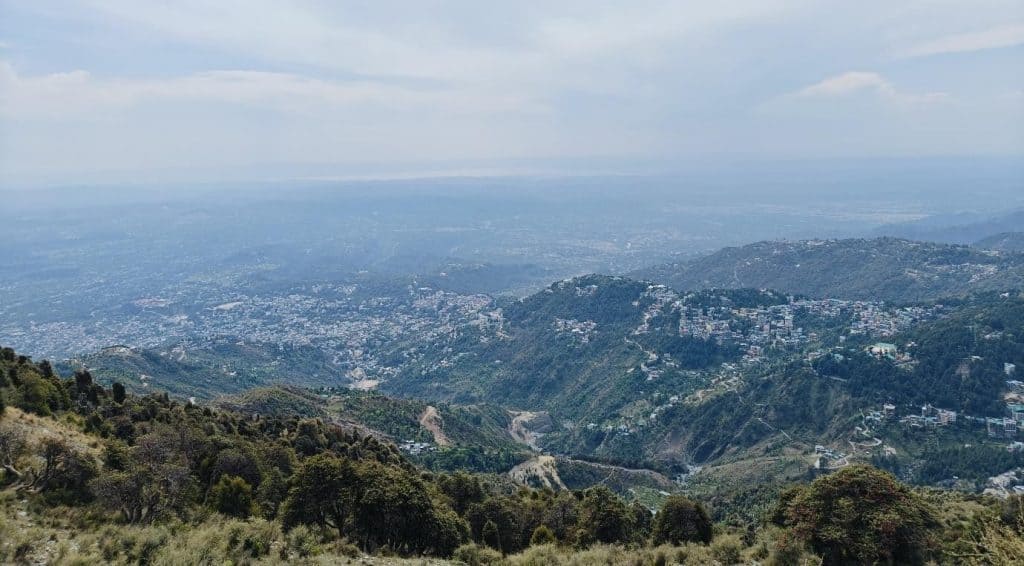
The Triund trek is 6 km long, and only an initial 1 km to Bhagsu waterfall is paved. It usually takes close to 4 hours to complete this.
Mules are also using the same trek to transport supplies to the cafes situated along the trail. As we moved along the paved pathway, we could hear the noise of streams flowing down in the valley.
Soon, the Bhagsu waterfall also came into sight. A stream of water was making a roaring sound as it splashed onto hard rocks. Some adventure seekers were enjoying the stream below in the valley.
As we moved forward, we found ourselves in the forested section of the trek. Birds were chirping among Rhododendron and tall pine trees; It was a delight to see the birdwatchers.
Soon, Forest Officials stopped us for a permit. This system has been put in place to preserve the Himalayan ecology by keeping the influx of tourists in check.
We kept going onto a narrow trail. In some places, the gradient was gentle, but mostly, it was steep. Loose gravels pose a constant threat. One wrong step and it could easily twist the ankle. A good number of foreign tourists were visible among trekkers returning from the peak. In recent times, Himalayan Hill stations have emerged as famous destinations among Israeli and European tourists.
After two hours of trekking, we reached a café situated at the ridge. A breathtaking view of Dharamshala city was visible from here. The city looked like a concrete jungle from these heights. The green outfield of the cricket stadium was starkly visible. At the horizon, a big water body was also visible; later, I learned that It was Pong Dam.
I was mesmerized to see cattle grazing in highland meadows dwarfed by snow-covered peaks. My daydream was broken only by a fresh spell of drizzle. As we resumed our ascend, the weather started to change. It was intermittently drizzling, and a cold wind was causing the chilling effect. I put on an extra layer of clothing and kept on going.
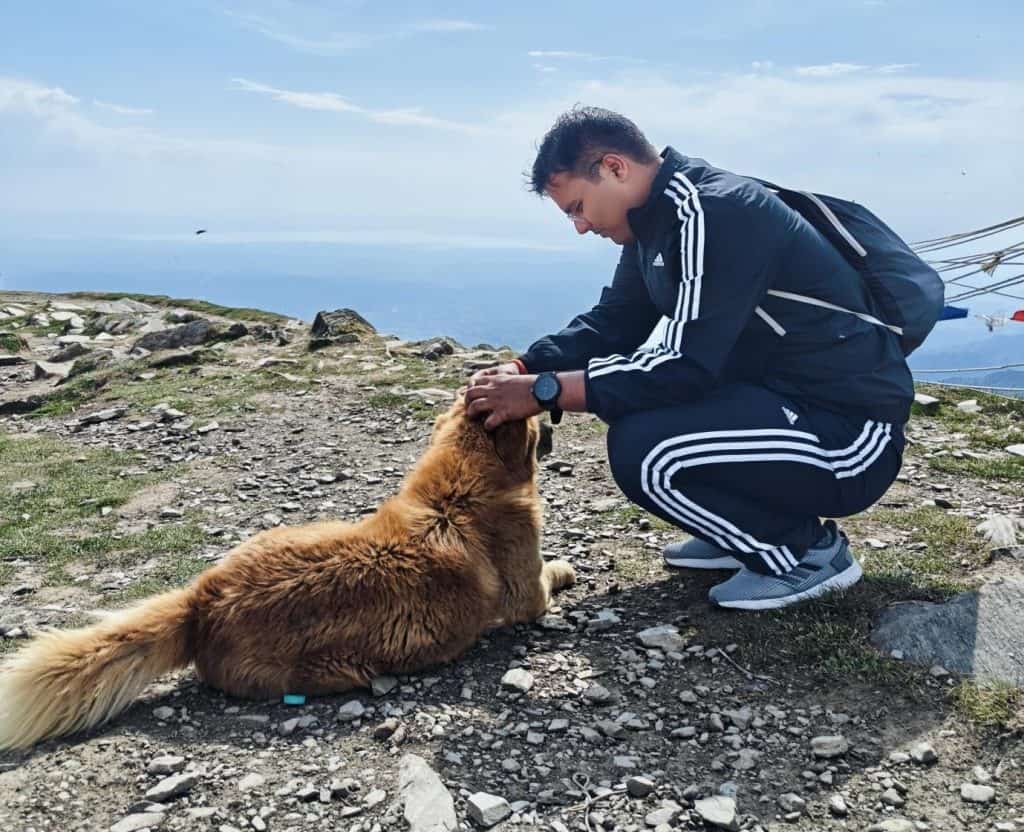
After navigating boulders, steep gradients and loose rocks for two more hours, we finally reached our base camp in the late afternoon. There, I encountered an unexpected companion, a friendly dog whose wagging tail and gentle eyes instantly warmed my heart. We instantaneously built a connection between us.
The weather started to deteriorate at the Triund Trek Base camp. The Base Camp was situated on an exposed surface at the top of a hill. There was no natural barrier to deflect or slowdown winds. The cold wind transformed into a fierce gale, and the clear skies darkened with clouds. With an abruptness that mirrored nature’s unpredictability, the heavens opened, unleashing torrents of rain upon the rugged landscape. The temperature plummeted, sending shivers down our spines.
We ran to the kitchen that trekking agencies were maintaining to cater for the needs of tourists. Even the kitchen had limited space to shelter everyone. We huddled together in that little space like sheep do in the barn for warmth, seeking refuge from the biting cold that now enveloped us. The cook was kind to serve us tea. Though tea was more like a hot sugar syrup, it provided much-needed relief from the cold.
Triund Peak is a one-hour trek from here. We were eager to finish our trek to the top, but waiting at base camp for the weather to improve seemed prudent. I didn’t want to put myself or others at unnecessary risk. The weather was showing no sign of improvement and gradually evening was also setting in. It was becoming darker, and we were quite tired, so we abandoned the idea of scaling the Triund Peak that evening.
Our trek guide was struggling to erect the tents that would shelter us from the onslaught of wind and rain. With each gust threatening to uproot the tent from the ground, but he persisted. He drove spikes into the ground with expertise and secured the tent through ropes. Finally, he was able to erect the tents against the blizzard; we offered words of gratitude to our guide.
I retired myself in my sleeping bag inside the tent. The tent was barely holding up in that stormy wind. Soon, I fell asleep because of exhaustion. The guide woke me up for dinner. By that time, the blizzard had stopped, but the temperature was still frigid. It was dark all around. I didn’t want to come out of the comfort of my sleeping bag. But sleeping hungry was not a good idea at all; we had to trek again the next day.
Reluctantly, I came out of the tent. Our camp cook, undeterred by the harsh weather, had prepared a dinner for weary travellers seeking solace amid nature’s fury. We were served a hot cooked meal in the kitchen illuminated by the soft glow of stars. Dinner was simple but delicious given the resources that were at our disposal there. As we savoured each mouthful of our dinner, the hardships of the day were replaced by a sense of contentment and gratitude for the simple pleasures of a hot meal amidst the wilderness.
There is no permanent source of water at the base camp. All the essentials, including water, are transported on the back of mules from the city down below. I felt pity for the dog waiting for leftover food, but I didn’t waste anything thinking about the hardship it takes to serve food here.
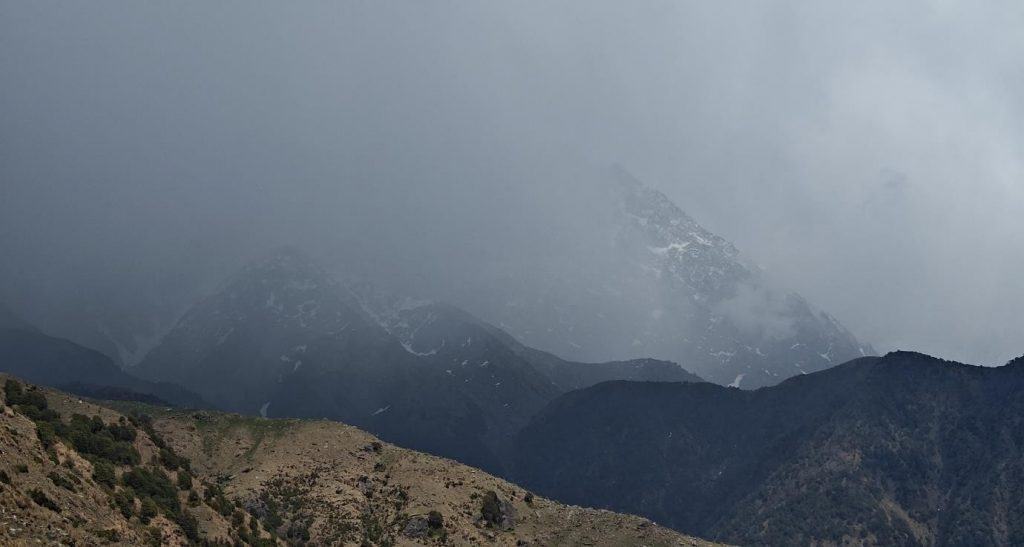
The campfire was also on the itinerary, but because of rain, the wood had become wet, and it was nearly impossible to light it. Notwithstanding this setback, everything seems perfect there. Snow peaks of the Dhauladhar were reflecting the moonlight. Stars were glittering in the sky. Down below, the valley was illuminated by city lights. Everything seemed so peaceful and serene. It was a scene to behold. We sat in the open for some time to chitchat and finally decided to call it a day.
I woke up at dawn. It would be fancy to expect a toilet at this height. The agency has put dry toilets for the comfort of female tourists. Men were relieving themselves amidst nature. Bathing was out of the equation as there was only a little water to waste except for drinking and cooking. We were served Aloo Poori for breakfast.
The guide told us there was an alternate way to descend from the other side of the peak that had a relatively gentle gradient. But to do so, first, we have to trek to the peak. Group members were vacillating about what to do next. Most were tired by the battering of the weather yesterday. We also changed our minds and dropped the idea of trekking to the peak. We started our descent from the same trek. Although the downhill journey was less energy-intensive, more carefulness was required. Loose gravels posed a significant challenge; any slip could be fatal.
On the way back, we completed our journey in almost half the time that it took uphill. Close to Bhagsu waterfall, we stopped at Shiva Café to have snacks and tea. The cafe provides a range of options for tourists to choose from. By this time, the sun was also up; it was a soothing relief from last evening. Like cold-blooded reptiles, I basked under the sun.
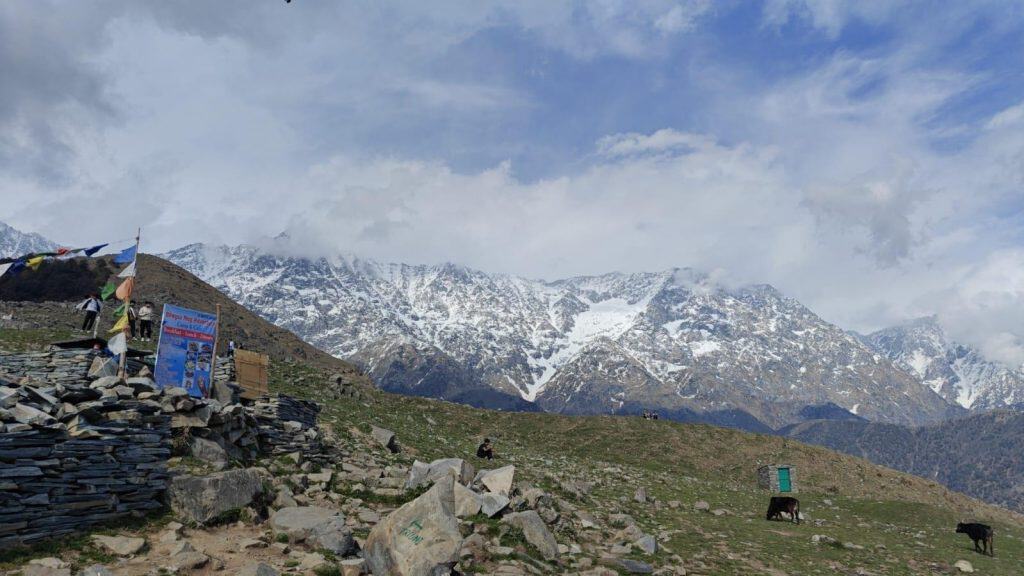
Columns of upgoing tourists were lined up at checkpoints for forest permits. The guide told us that peak becomes crowded on weekends. We kept our descent, crisscrossing path with the upcoming wave of tourists. Bhagsu Waterfall and the nearby Temple are quite famous among those who want to enjoy themselves but need help climbing the Triund peak.
I felt a sense of accomplishment when I returned to our starting point. Though my knees were not supporting the weight of my body, the profound sense of achievement kept me going. The hotel was nearby.
This arduous trek wove memories that would forever be etched in the fabric of my soul. Each step of this adventure is a testament to the resilience of the human spirit and the beauty of the world that awaits beyond the confines of our comfort zones.
As I gazed back at the mountains we had just trekked, I was reminded that the true essence of life lay not in the destination but in the journey itself. With hearts brimming with gratitude and a newfound sense of purpose, I bid farewell to Triund, knowing that though this trek has reached its end, the memories and lessons gleaned along the way would forever guide me on my next adventure, wherever the winds of wanderlust may lead.
(About the Author: Deepak Dwivedi recounts an unforgettable evening at Triund Base Camp. Deepak is a probationary Indian Information Service (IIS) Officer. He is currently working as Assistant Director under the Ministry of Information and Broadcasting, Government of India. He is based in Delhi.}
Read more: Latest



